Portraits in Art: History, Types and How to Value Them?
written by Urszula Frick
Whether it is an old photograph of our late relative, a majestic depiction of a royal in a coronation suit, or one of the many unknown faces caught in glittering baroque frames in a museum gallery, portraits are one of the most powerful images humans can create. Not only because they show a specific person but also because they often are a reflection of this person in a certain moment of their life, through the eyes of an artist.
Frans Hals, later finished by Pieter Codde "De Magere Compagnie", 1637, Oil on canvas, 209 × 429 cm. Image: Wikipedia / License: Public Domain
What Is a Portrait?
A portrait is a painting, drawing, sculpture, photograph or any other artistic representation of a person with their face and expressions being predominant. The purpose of a portrait is to depict the model’s likeness, personality and sometimes even their mood. It is also important to note that a portrait is the reflection of the model seen during the eyes of the artists. It is the artist that decides which physical feature or which mood reflects model's personality. Sometimes artists decide to hide or exaggerate model's facial details, making it impossible for the model to have identical portraits created by various artist or even by the same artist. Rembrandt van Rijn (Dutch, 1606 - 1669) painted many portraits of his beloved wife Saskia, and each of them shows her diffrently.
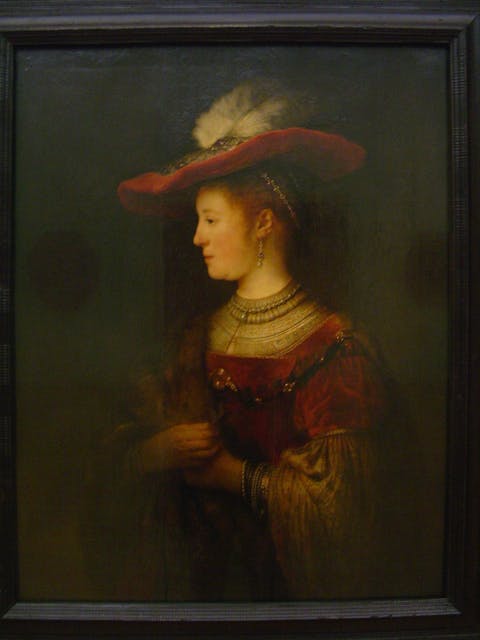
Rembrandt van Rijn, portrait of Saskia van Uylenburgh, 1633, Schloss Wilhelmshöhe, Kassel, Germany. Image: Wikipedia / License: Public Domain
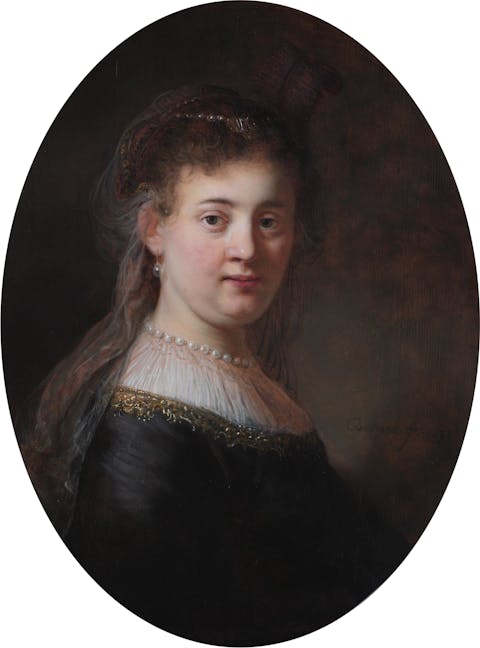
Rembrandt van Rijn, Portrait of Saskia van Uylenburgh, 1633, Rijksmuseum Amsterdam. Image: Wikipedia / License: Public Domain
Types of Portraits and Art Techniques
When you wander through a portrait gallery that is usually in every in every palace and art gallery or museum, you probably noticed the abundance of types of portraits there are. They include portraits of people depicted from different angles, group of peoples or are varied by the setting. Each of the type of portrait has a certain effect and was used and painted for various occasions and purposes. According to the length, the portraits can show a model in full length, half length, three quarter length, bust portrait or head and shoulders only.
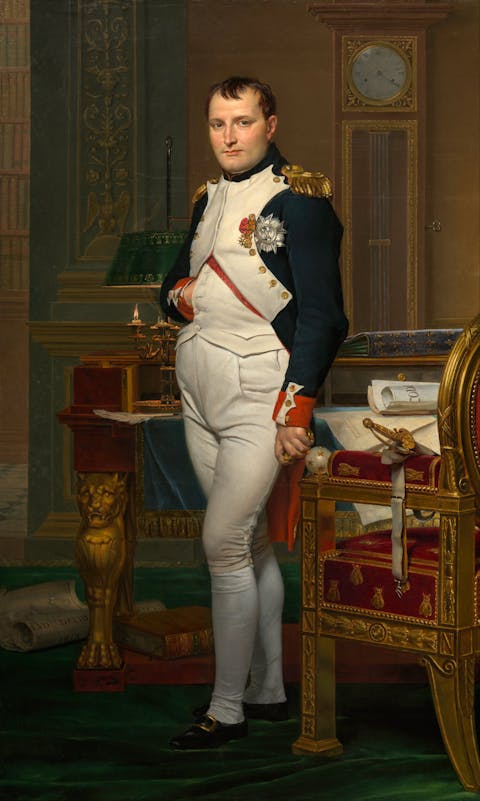
Jacques-Louis David, The Emperor Napoleon in His Study at the Tuileries, 1812, full length portrait. Image: Wikipedia / License: Public Domain
According to the pose the portraits can show a profile, a full face view, a three-quarter view or a so called Tronie. While the first three types focus on the positioning of the face, Tronies, which developed in the 17th century Netherands, showed human expressions, often with various poses of the head. The origin of the word itself is from the word Troigne, a Dutch word used to describe head, face and expression of face. One of the most famous portraits of this type is “Girl with a Pearl Earring” by Johannes Vermeer. Tronies are almost the only portraits from the 17th century where people show any kind of emotions, like laugh or anger.
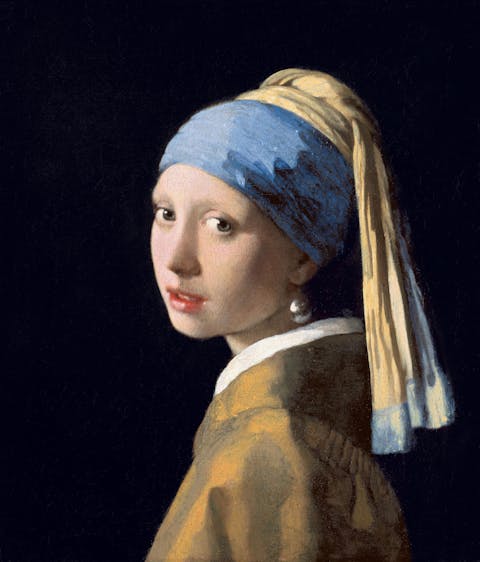
Johannes Vermeer, Girl with a Pearl Earring, 1665, Mauritshuis in Den Haag. Image: Wikipedia / License: Public Domain
Portraits can be also divided by the numbers of models. They can be individual, showing just one person or double portraits, showing i.e. married couple. The group portraits can for example show a family or members of a certain guild or association. A special kind of individual portrait is a self-portrait, where the artists is painting himself often using a mirror reflection. Many great artists such as Rembrandt, Caravaggio or Bernini created many self-portraits during their lives. Having a gallery of self-portraits depicting one artist is an important documentation of not only artist aging appearance, but also the development of his style. Often the close inspection of a self-portrait helps to date the rediscovered paintings.
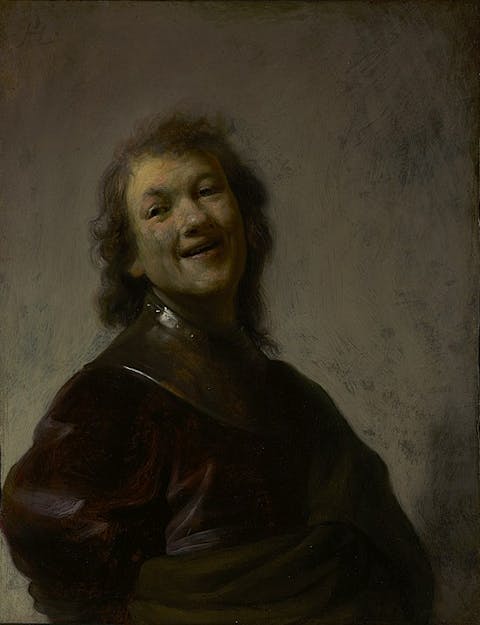
Rembrandt van Rijn, Self-portrait, c. 1628, re-discovered in 2008, J. Paul Getty Museum, Los Angeles. Image: Wikipedia / License: Public Domain
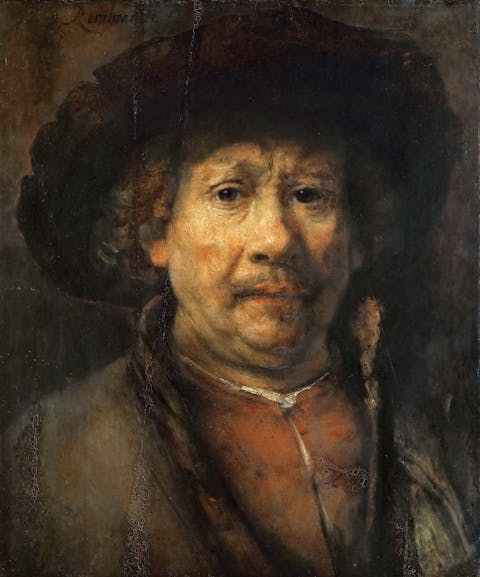
Rembrandt van Rijn, Self Portrait (detail), 1652. Kunsthistorisches Museum, Vienna. Image: Wikipedia / License: Public Domain
Portraits can be created using various techniques. The most popular and oldest techniques are portraits that are painted, drawn or sculpted. With the invention of the photography, the photography portraiture developed, making it possible to catch a glimpses of people living as early as 1839, when Robert Cornelius decided to take a photograph of himself. This photograph is the earliest known example of photographed portrait in the world. Today the portraits can be also made digitally, using a digital software to produce images 2D or 3D images or digital sculptures that can later be shown either on a screen or Virtual or Augmented Reality. The latter example can be a recent digital statue of the singer Rihanna virtually placed in the Metropolitan Museum of Art, during the Met Gala 2022.
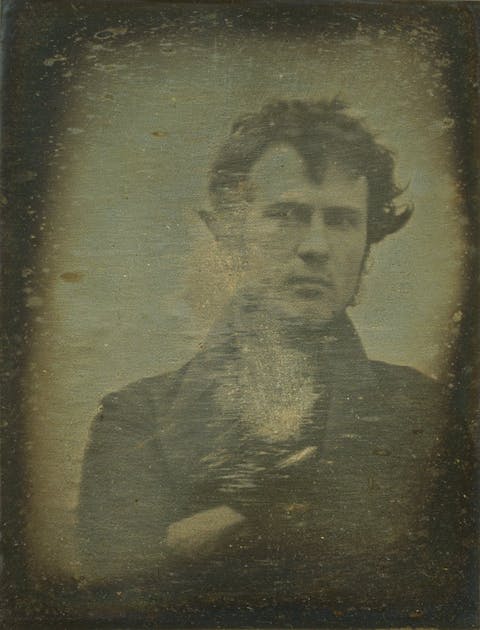
Robert Cornelius, self-portrait 1839. The oldest photograph of a person ever made. Image: Wikipedia / License: Public Domain
Ancient Portraits
An urge to catch someone’s appearance, to freeze it in a specific situation and be able to reproduce their facial features and personality on a piece of paper, canvas or in clay, probably started to develop as early as the first cave paintings started appearing. One of the first depictions considered to be portraits that survived to our times are plastered human skulls made in ancient Levant between 9000 and 6000 BC. This sculptural examples also show how important it was already back then to preserve the image of the dead in the burial rituals.
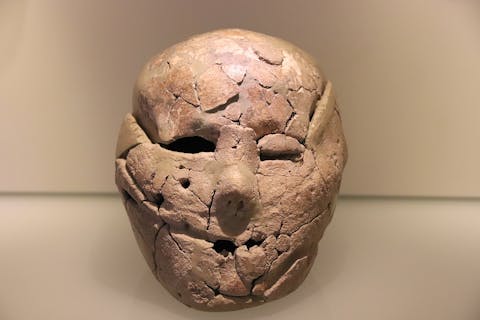
Plastered skull,Tell es-Sultan, Jericho, Pre-Pottery Neolithic B, circa 9000 BC. Image: Wikipedia / License: Public Domain
Most of the earliest depictions, are those of rulers or politically and religiously important individuals. They also tend to be artistically idealised and prone to existing conventions rather then showing personal features of the subjects body and face. However, some examples of portraits of Egyptian Pharaohs show that even though the artists were bound to a strict artistic canon some of their rulers ( such as Akhenaten) have individual features and can be recognised.
Some of the earliest surviving painted portraits of common peoples are the Greco-Roman funeral portraits from the Egyptian district of Fayum. Painted with pigmented Wax, the pictures were preserved by the dry climate of this region, and are today praised for their beautiful colors. There are many Fayum portraits and they differ considerably when it comes to the quality, but they all show rather idealised depictions of young people making it uncertain if they were painted from life, when the model was still alive.

Fayum portrait of a young man, late 1st century, A D.Walters Art Museum, Baltimore. Image: Wikipedia / License: Public Domain
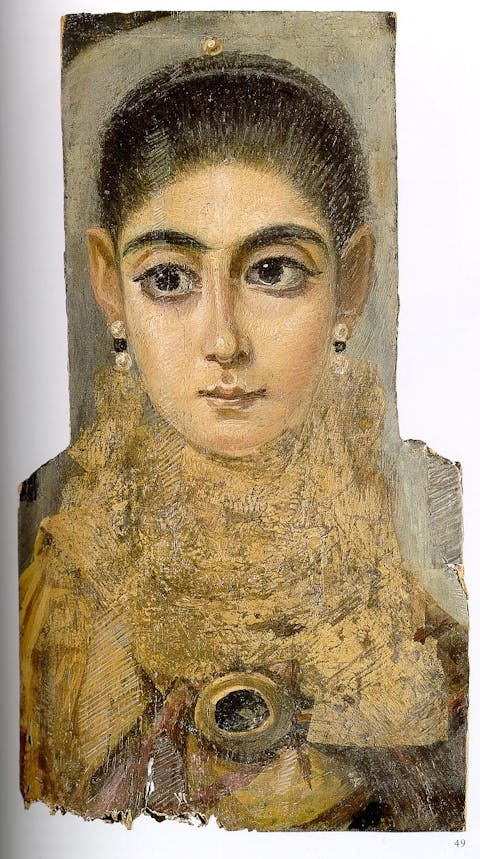
Fayum portrait of a young woman, 3rd century, Louvre, Paris. Image: Wikipedia / License: Public Domain
In the Ancient Rome sculptural portraiture was one of the most important way to depict Emperors and politicians. The Capitol Museum in Rome has the whole rooms filled with busts of Women and Men in all ages, even children. Probably the most interesting examples are the veristic portraits from the republican period, showing incredible realism and attention to detail. Every imperfection, scar or wrinkle was not to be omitted.
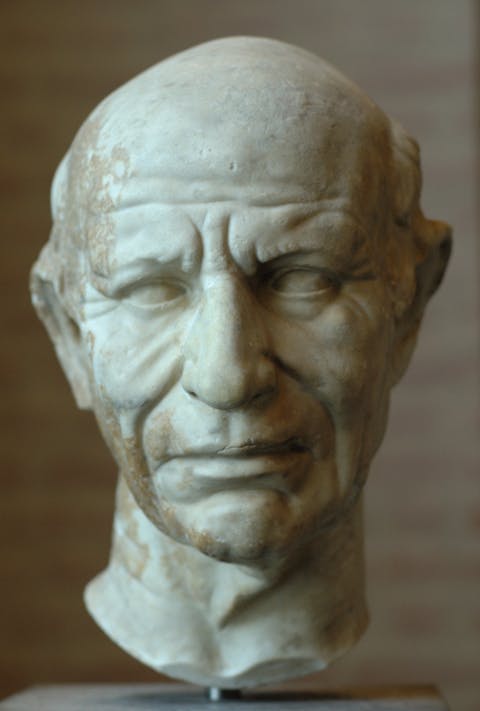
Bust of a Man, Ancient Rome, 60 BC. Image: Wikipedia / License: Public Domain
Medieval, Renaissance and Baroque Portraits
During Medieval times the portraits usually showed Kings, rulers and religious individuals, such as pope and cardinals. Common people usually got portrayed as donors in the religious context, on the altars, miniatures, or on their tombs when it was time to reunite with Lord or, in a worse case, to wait the the purgatory. The general rule of this time was that everything that is earthly was not significant, and that is why it was not worth to focus on the depictions and celebration of the body, which eventually turned into dust. Although the depictions of humans in the Medieval times are heavily stylised and generalised, even then there are examples of individualisation when depicting facial features, especially of the prominent donors.
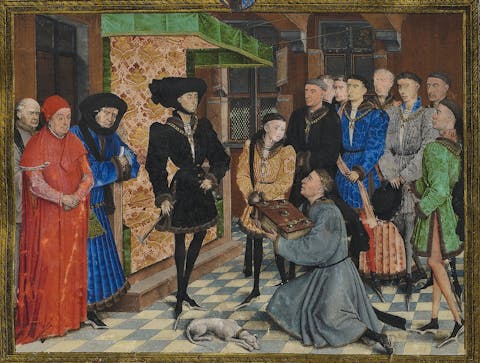
Jean Wauquelin presenting his 'Chroniques de Hainaut' to Philip the Good,presentation miniature by Rogier van der Weyden, 1448. Image: Wikipedia / License: Public Domain
During the Renaissance and Baroque, portrait art flourished like never before, seeing abundance in the types of depictions and artistic techniques. Newly discovered oil paintings allowed artists to experiment with colour palette and also prolonged the time they could work on their paintings. Earlier techniques such as al fresco or egg temperas where the media where artist had to work fast and there was no room for error. Obviously, the most famous portrait of the Renaissance is Leonardo da Vinci's Mona Lisa, but the Renaissance produced many of the great portraitist such as Albrecht Dürer known for his amazing self-portraits, Hans Holbein, who produced the iconic depictions of the English King Henry VIII, and Raphael Santi, whose portraits always create a sense of intimacy between the model and the spectator.
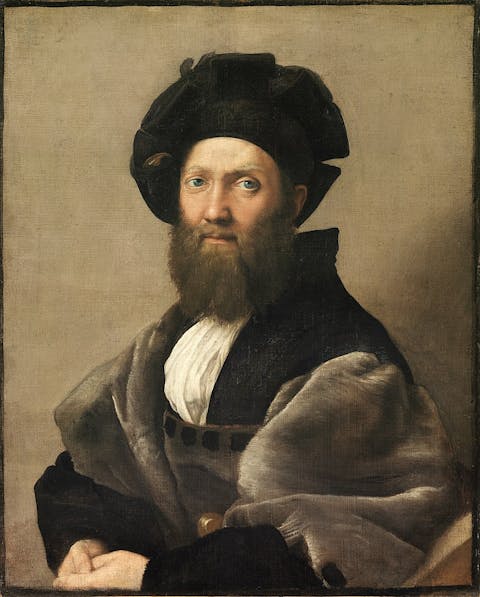
Raphael Santi, Portrait of Baldassare Castiglione, c. 1515. Image: Wikipedia / License: Public Domain
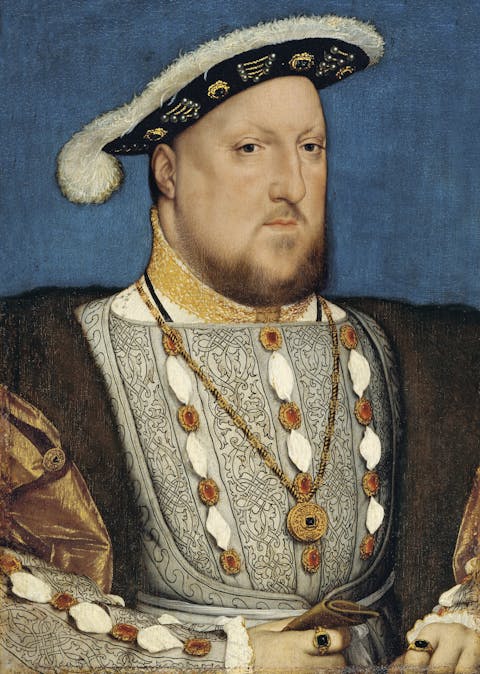
Hans Holbein, Portrait of Henry VIII, c. 1536. Image: Wikipedia / License: Public Domain
During the Baroque and Rococo periods, portraits became a much more important record of status and position. It also became more common for regular people to order portraits. Of course the artists like Rubens or Velazquez were only available for the High Society and Royals, but some less famous artists of that time were also great portraitist. Among them were Rembrandt van Rijn and Johannes Vermeer.
Renaissance, Baroque and Rococo also produced very prominent women artists and portraitists. Portrait and still life paintings were the subjects women artists exceeded in, because they were restricted to join art classes with nude models in them. Lavinia Fontana, Sofonisba Anguissola and Artemisia Gentileschi are probably the most famous women artists and greatest portraitist of those periods.

Diego Velázquez, Pope Innocent X, c. 1650. Image: Wikipedia / License: Public Domain

Sofonisba Anguisola, Self-portrait, circa 1560. Image: Oombergen / License: CC BY-SA 4.0
From the 18th century to the Modern Portraiture
During the 18th century, pastel portraits became widely popular. Pastels crayons were already known in Renaissance, but it was not so common to use them for paintings. They are very fragile and have to be kept under the glass so the powder stays on the paper. One of the greatest pastel portraits of the time where the ones made by the French artist Jean-Baptiste-Siméon Chardin.
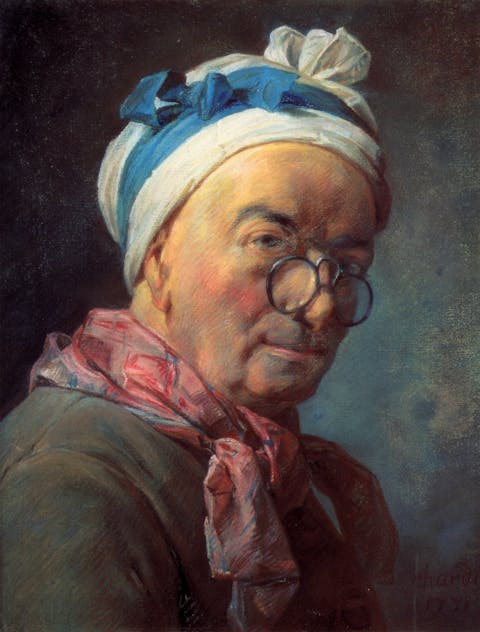
Jean-Baptiste-Siméon Chardin. Self Portrait, 1771, pastel on paper, The Louvre. Image: Wikipedia / License: Public Domain
During the 18th century many artist used what was alled a "Grand Style", which means they would once again idealise their models, removing the imperfections. On the portraits everyone had a perfect complexion with rosy cheeks, glossy eyes and perfectly arranged wigs, which were still widely popular. People in general were very conscious about their public appearance in the social circles. Men often wore makeup and the time they spend to make themselves ready before leaving home was as long as for the ladies.
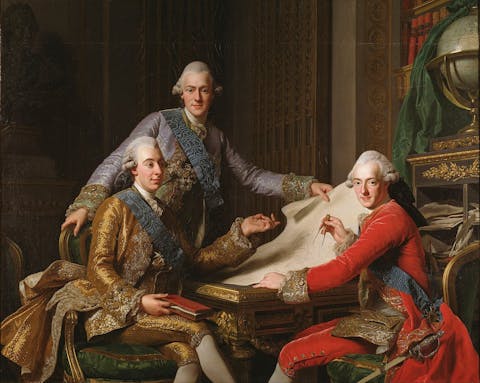
Alexander Roslin Swedish King Gustav III of Sweden and his Brothers, 1771. Image: Wikipedia / License: Public Domain
19th century was an age of artistic revolution. The artist who created in the first half of the century were heavily influenced by Academia, which was, for the first time in the history, an institutionalised art school. The rules for historical, and official portrait were dictated. All depictions were based on classical principles and studying roman marbles. Many great and monumental portraits have been made during this time, including the whole range of Napoleon's Bonaparte Portraits painted by Jacque-Louis David.
The second part of the 19th century saw a certain secession from those academic rules, by artists who often started as amateurs or were thought in the independent schools. This was when new, individual styles and ways of seeing the world started to come forward. It was also the time when in the contrary to the glittery and rich magnificent portraits of aristocracy, a realistic portrait started to appear. Gustav Courbet and Honoré Daumiere often depicted lower and middle-class people. Henri de Tolouse-Lautrec's favourite subject were dancers and prostitutes. Impressionists played with optics and light in their portraits.
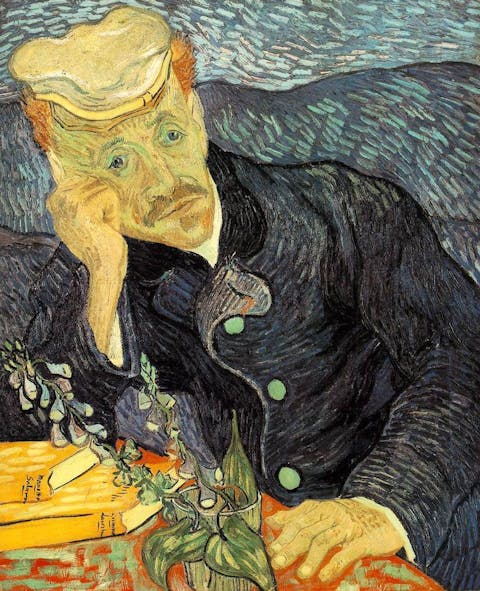
Vincent van Gogh,Portrait of Doctor Gachet, (first version), 1890. Image: Wikipedia / License: Public Domain
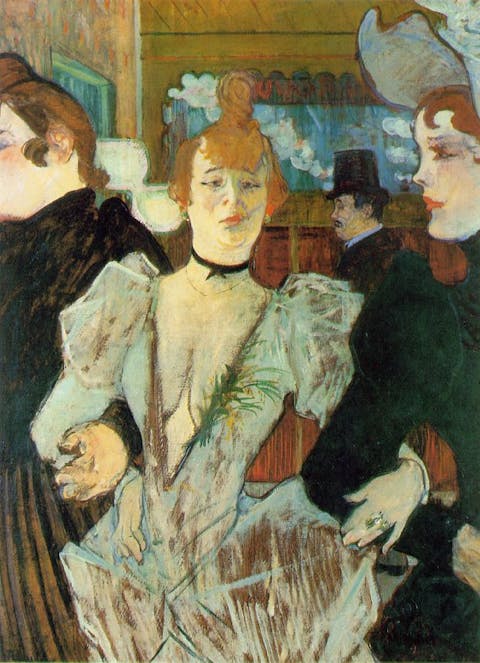
Henri de Tolouse-Lautrec, La Goulue arriving at theMoulin Rouge, 1892, oil on cardboard, Museum of Modern Art. Image: Wikipedia / License: Public Domain
It was also the time when photography was invented and became more and more popular in portraiture than a classic painting or sculpture. With a click of a button and several broken bulbs later, a perfect depiction of a living human was created on a glass plate and later on paper. The need for costly and time consuming painted or sculpted portraits decreased.
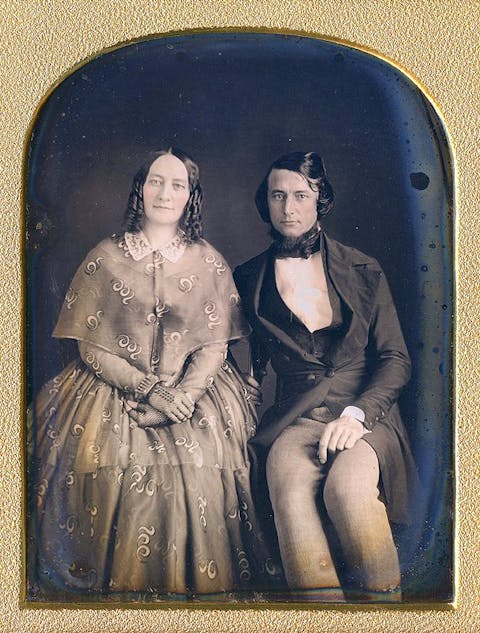
A daguerreotype of a Victorian couple, 1840s or 1850s. Image: Wikipedia / License: Public Domain
The artistic revolution followed into the 20th century with the individualism and individual style that were now dictating the course of art. Some styles from this time period, such as cubism redefined the meaning of a portrait completely. This revolution in art seem to continue into the modern times, with artists always coming up with new forms and techniques or coming back to the roots. It is still the individualism that counts the most.

Pablo Picasso, Portrait of Daniel-Henry Kahnweiler, 1910, The Art Institute of Chicago. Image: Wikipedia / License: Public Domain
Most Expensive Portraits Ever Sold
The portraits can be very valuable on the market, especially if they depict an important historical individual or were painted by a famous artists. The most expensive portraits ever sold on the auction up to date are Vincent Van Gogh’s Portrait of Dr Gachet, sold in 1990 for $82.5m ( one of the versions pictured above), Gustav Klimt’s Portrait of Adele Bloch-Bauer II, sold in 2006 for $87.9m and a Renaissance portrait of a Young man holding a roundel painted by Sandro Botticelli, sold for $92.1m in 2021.

Sandro Botticelli, Young man holding a roundel, 1470-1480, private collection. Image: Wikipedia / License: Public Domain
How to Establish a Value of a Portrait?
There are certainly many factors that helps to establish the value of the portrait. Probably the most important ones are who is the portrayed person and who is the artist. The portraits of famous people tend to do better at the auctions than the ones of anonymous models, if they were not created by the hand of a famous artists.
The other factors one should think about when valuing a portrait is its size and condition. This is especially important when valuing paintings and photographs, made of less durable material than for example sculptures. If you have a pastel painting, a watercolour or a photograph, be sure to store them in appropriate conditions, ideally in the dark room and away from the sunlight so the paper and pigments wont get affected.
It is always good to follow auctions where the portraits are sold and the past auction results for the portraits similar to yours. If you have a portrait by certain artists, check what their art is worth on a current market.
It is always good to have your art inspected and valued by a specialist in the field
How to Submit Your Portrait for Valuation at Value My Stuff?
To find out what your portrait is worth, you can send submit it for an online valuation at Value My Stuff. If you want our specialists to help you establish what your portrait is worth, follow these rules when submitting it through our online form:
1. Prepare good Images. It is important to send good images, ideally photograph your portrait against the white background with a soft light source, for example in the daylight. A strong focused light can leave a reflection which can make hard to specialist see the details. always remember to take the photos of the back, if it is a painting, drawing or photograph. Any marks, scratches, stickers should also be photographed. The general rule is: the more images, the better.
2. Look for a signature of the artist. They are usually signed in one of the lower corners, but sometimes can be found on the back of the painting, drawing or a photograph. If it is a sculpture, look for it in the lower oarts or in the parts that are rarely visible to the eye, like underneath the base ( if it's possible to turned it upside down).
3. Measure your artwork. As mentioned in the section above, the size is important when establishing a value, especially of the unknown artist.
4. Describe your portrait. A good description can shed a light on the provenance of the artwork. Details about who made it, if the artist is known to you, when and where was it made, as well as who the portrait is depicting are all very important. If you don't know anything, write how the work came into your possession, where and when it happened.
With all this information our Specialist will be able to help you find out what your portraits are worth.

